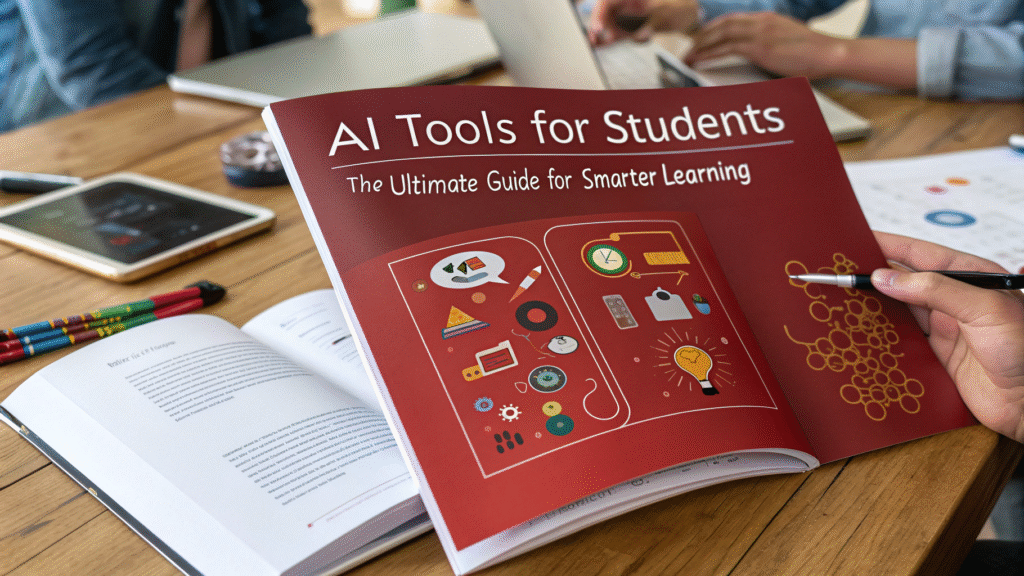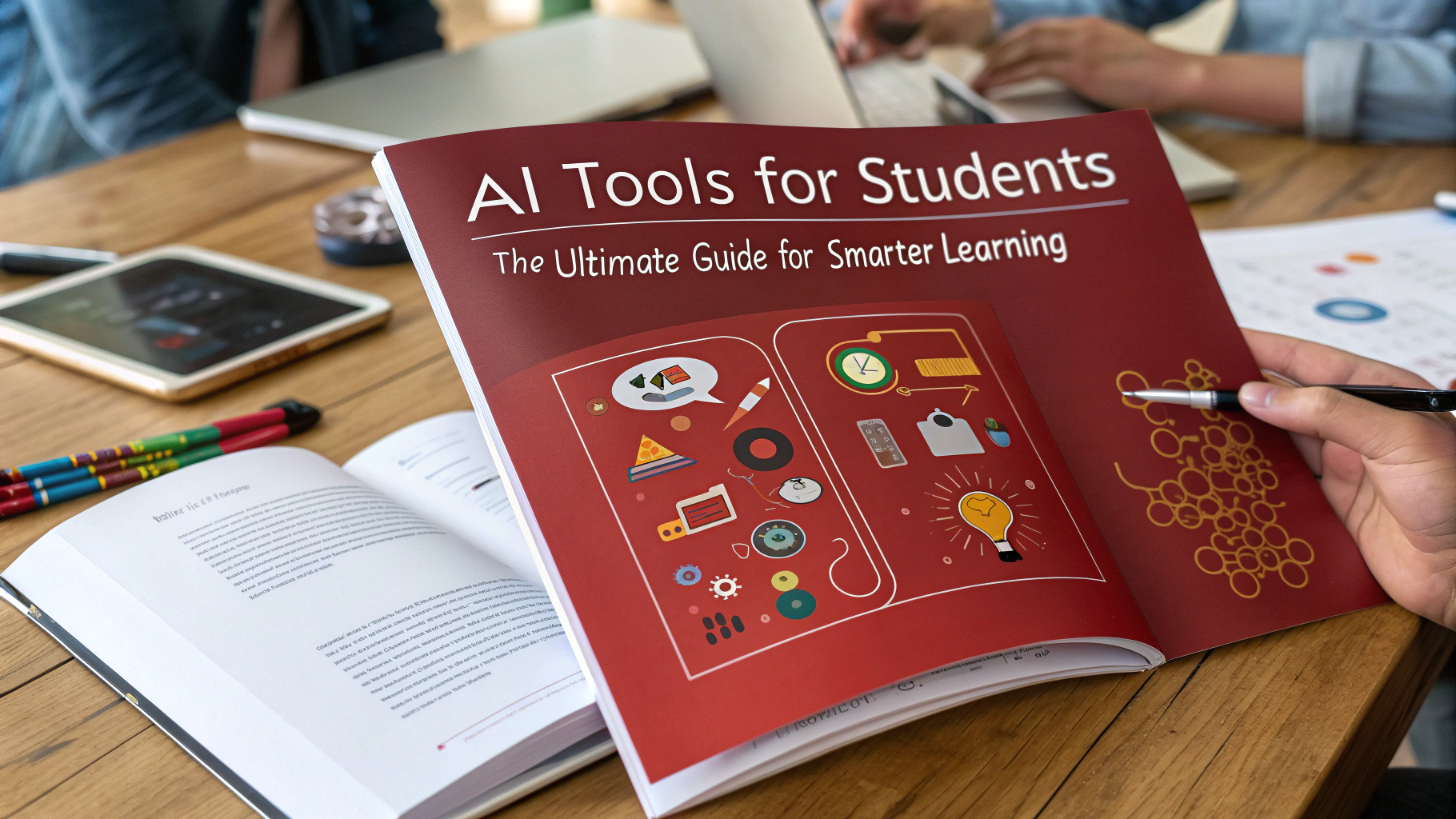In 2025, Artificial Intelligence (AI) has become one of the most powerful allies for students. From writing assignments and taking notes to solving math problems and improving productivity, AI tools are making education smarter, faster, and more personalized.
This article is a complete guide to the best AI tools for students, how they work, and how learners can use them to boost efficiency, creativity, and academic success.
Why Students Need AI Tools
Modern students face challenges like information overload, time management issues, and learning gaps. AI tools solve these problems by:
- Offering personalized learning tailored to each student’s pace.
- Automating repetitive tasks like note-taking and proofreading.
- Providing instant answers and explanations anytime, anywhere.
- Helping with creative projects like essays, presentations, and designs.

Best AI Tools for Students in 2025
1. ChatGPT (AI Writing Assistant)
- Use Case: Writing essays, summarizing notes, answering questions.
- Benefits: Provides clear explanations, grammar checks, and brainstorming ideas.
- Pro Tip: Students should use it as a study guide instead of copy-pasting content.
2. Grammarly (AI for Writing Improvement)
- Use Case: Proofreading, grammar correction, plagiarism checks.
- Benefits: Enhances writing style and ensures error-free assignments.
- Pro Tip: Use the plagiarism checker to maintain originality in essays.
3. Notion AI (AI Note-Taking Tool)
- Use Case: Organizing notes, summarizing lectures, project management.
- Benefits: Creates structured study notes and helps with group projects.
- Pro Tip: Students can integrate calendars, tasks, and reminders to stay on track.
4. Quizlet with AI Flashcards
- Use Case: Creating AI-powered flashcards for revision.
- Benefits: Boosts memory retention with spaced repetition.
- Pro Tip: Students can scan textbooks, and AI generates flashcards automatically.
5. Duolingo with AI Chatbot
- Use Case: Learning new languages.
- Benefits: Personalized lessons with instant feedback.
- Pro Tip: Practice speaking with the AI chatbot to improve fluency.
6. Socratic by Google (AI Learning Assistant)
- Use Case: Solving homework problems and getting explanations.
- Benefits: Uses AI + Google search to explain concepts in detail.
- Pro Tip: Best for math, science, and history homework help.
7. Otter.ai (AI for Transcription)
- Use Case: Recording and transcribing lectures.
- Benefits: Students can review lectures word-for-word later.
- Pro Tip: Pair it with Notion AI for structured revision notes.
8. Canva AI (AI for Design Projects)
- Use Case: Creating presentations, posters, and infographics.
- Benefits: AI templates save hours of design work.
- Pro Tip: Students can use “Magic Design” to auto-generate professional slides.
9. Wolfram Alpha (AI Problem Solver)
- Use Case: Advanced problem solving in math, physics, and engineering.
- Benefits: Explains step-by-step solutions.
- Pro Tip: Perfect for STEM students who need detailed calculations.
10. Perplexity AI (AI Research Assistant)
- Use Case: Academic research and citation help.
- Benefits: Provides sources with answers (unlike ChatGPT’s generic responses).
- Pro Tip: Use it to generate bibliographies and find credible references.
How AI Improves Student Learning
- Personalized Education – Each student gets tailored content.
- Faster Research & Writing – AI reduces hours of manual effort.
- Better Collaboration – Tools like Notion AI make group projects easier.
- Skill Development – AI improves communication, creativity, and problem-solving.
- Accessibility – AI supports students with disabilities (speech-to-text, screen readers).
Challenges of Using AI Tools in Education
While AI offers many advantages, there are risks:
- Overdependence: Students may rely too much on AI instead of critical thinking.
- Plagiarism Risks: Copy-pasting AI-generated content can cause academic penalties.
- Bias in AI: Some tools may provide incomplete or biased answers.
- Privacy Concerns: Data collected by AI apps may be misused.
Best Practices for Students Using AI
- Use AI as a guide, not a replacement.
- Cross-check answers with textbooks or credible sources.
- Combine AI with traditional learning methods.
- Stay ethical — avoid plagiarism and misuse.
The Future of AI in Student Learning (Beyond 2025)
- AI Mentors: Every student may have a personal AI tutor.
- Immersive Learning with VR + AI: Virtual classrooms with AI teachers.
- Emotion-Aware AI: Tools that adapt based on student mood and stress levels.
- Universal Access: Affordable AI tools for students worldwide.
Conclusion
AI tools are no longer just “extra help” — they are becoming an essential part of education. From writing assistants and note-taking apps to problem solvers and design tools, AI empowers students to learn smarter, not harder.
The key is balance: AI should enhance learning, not replace it. Students who use AI responsibly will have a competitive advantage in academics and future careers.


